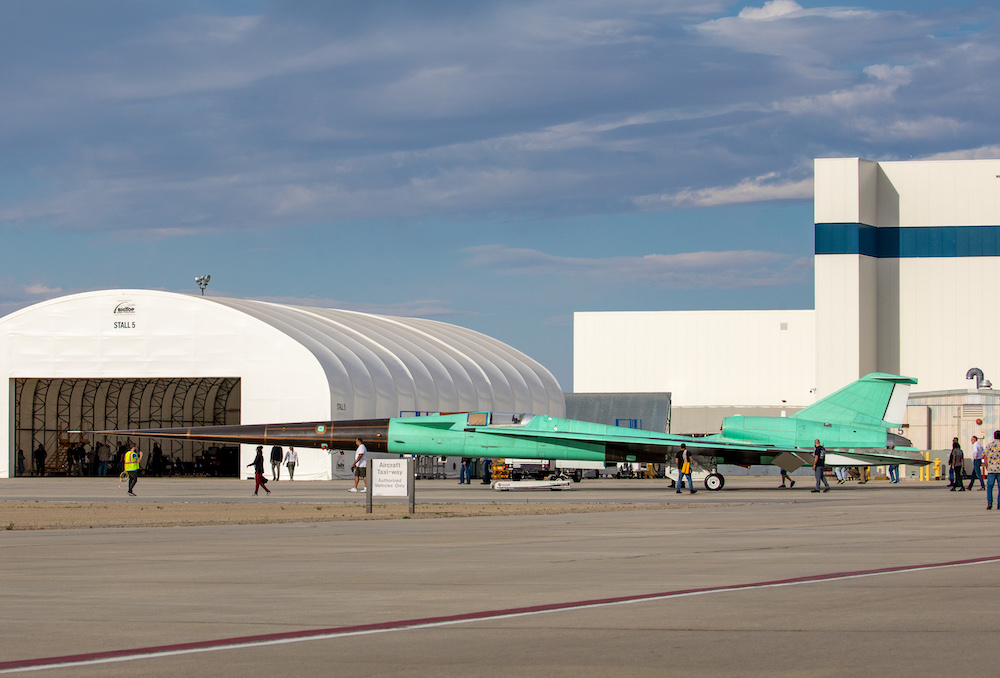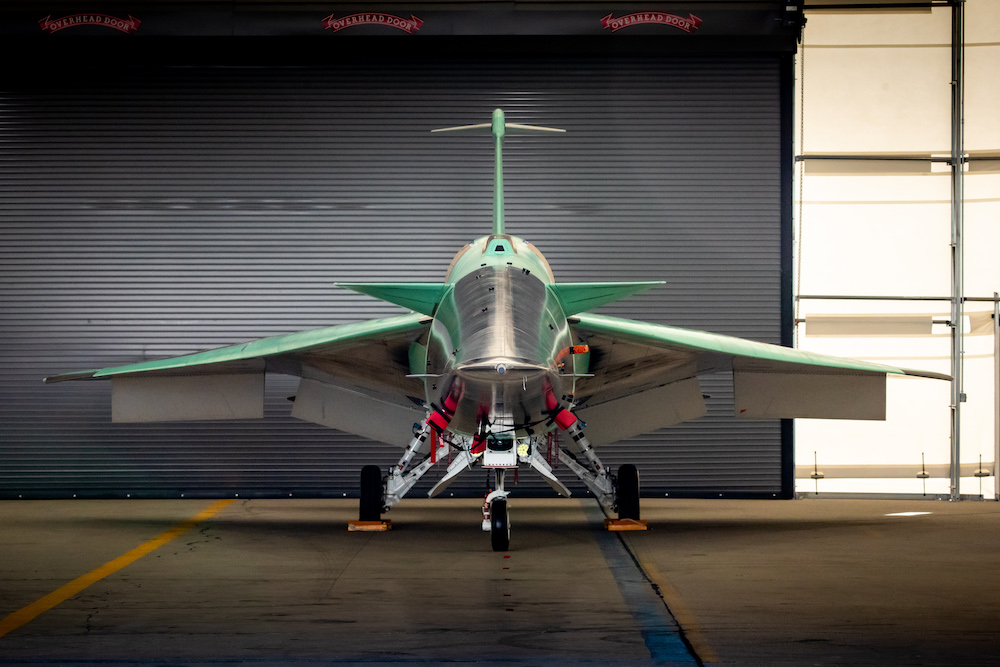NASA’s experimental X-59 Quiet SuperSonic Technology (QueSST) plane is gearing up for its first test flight sometime this year.
As its name suggests, the plane is trialing technology that dampens the sound of the very loud sonic boom that occurs when an aircraft breaks the sound barrier. The X-59 is supposed to reduce the sudden noise to a quieter “sonic thump,” so it could pave the way for supersonic passenger flights over the continental U.S. that up to now have been banned due to regulations around noise pollution.
NASA recently shared a couple of images (above) showing the X-59 sitting on what’s known as the “flight line,” the space between the hangar and the runway, at Lockheed Martin Skunk Works in Palmdale, California.
“The move from its construction site to the flight line is one of many milestones that prepare the X-59 for its first and subsequent flights,” NASA said this week, adding that the team will now conduct a series of important ground tests to ensure that the aircraft ready for its maiden flight.
One such test flight will involve flying the X-59 at supersonic speed over a number of communities to see how residents respond to the sonic thump generated during its high-speed flight. NASA will then hand its findings to U.S. and international regulators in a move that could open up the possibility of commercial supersonic flights over land.
The X-59, which began development in 2016, is designed to fly at 55,000 feet (16,765 meters) at a cruise speed of Mach 1.42 (937 mph/1,508 kph) — getting on for double that of a conventional passenger jet. At that kind of speed, flight times between destinations will of course be drastically reduced. The fastest flight between New York City and London by Concorde — the supersonic passenger jet operated by British Airways and Air France until its retirement in 2003 — took just 2 hours and 53 minutes, well under half the time it takes a subsonic passenger jet. It means that a supersonic flight between New York City and Los Angeles, which currently takes around 5 hours and 30 minutes, could be cut to around 2 hours and 30 minutes or even less.
Concorde flew between the U.S. and Europe, a route only allowed because the airports — Washington Dulles and New York City’s JFK — were on the East Coast, meaning the supersonic boom occurred over the Atlantic.
The X-59, however, could lead to a slew of new and faster routes not just over the U.S., but also globally, though whether you’ll be able to afford a seat is another matter entirely.




